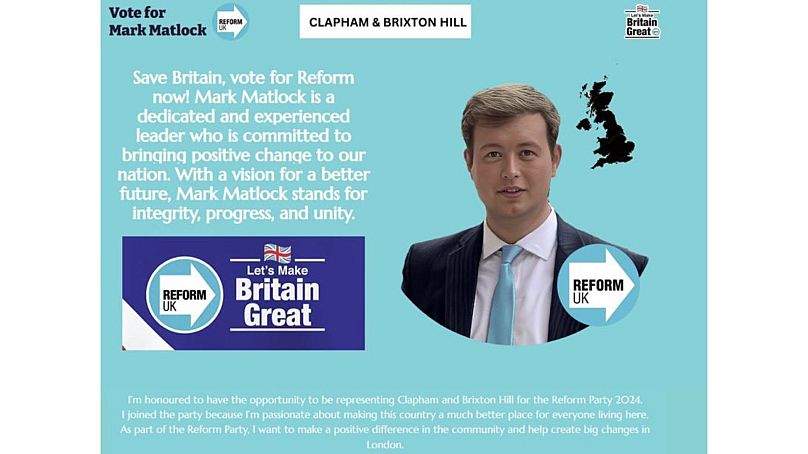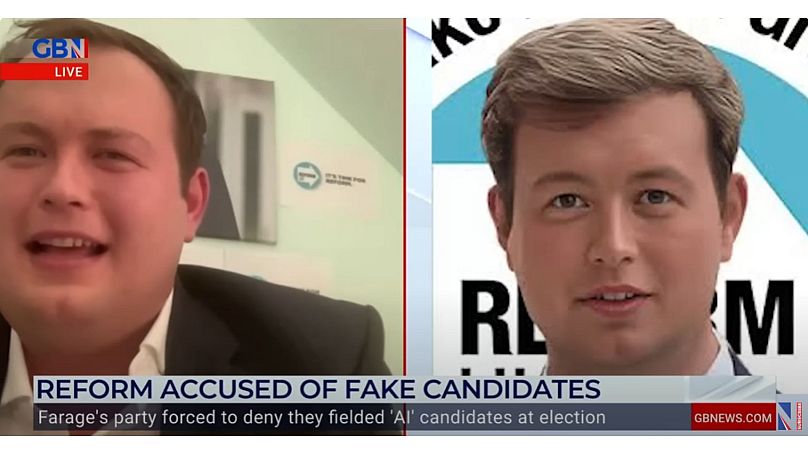Rumours have been rampant on social media that a candidate for the right-wing populist party Reform in the recent UK election wasn’t real.
A photo of Mark Matlock, a candidate who stood to be an MP for Reform UK in the south London constituency of Clapham and Brixton Hill, has triggered a wave of speculation that the far-right party stood fake candidates at the election.
The photo, which appears to have been digitally altered, prompted rumours that Matlock didn’t exist, which led to wider claims that Reform had fielded non-existent candidates in other seats too.
These were fuelled by other claims that Matlock hadn’t appeared at any hustings and that his rival candidates hadn’t ever met him.
He also failed to turn up to the count when the election results were announced in the early hours of 5 July.
Despite all the claims, there’s no real evidence that Reform fielded any fake or non-existent candidates.
Various domestic news outlets such as The Guardian, the BBC and Sky News have reportedly confirmed Matlock’s identity.
He also appeared on GB News a few days after the election to discuss the claims.
He said the reason he hadn’t been at the vote count was because he was suffering from pneumonia, repeating what he said on X before the results were announced.
As for his supposedly AI-generated photo, Matlock told The Guardian that the picture had been altered to change his tie and suit as he couldn’t get to a photographer on time.
Ultimately, Matlock came fifth in his seat, with under 2,000 votes, while Bell Ribeiro-Addy won for the ruling Labour Party with more than 24,000.
Paper candidates
While none of Reform’s candidates appear to be fake, the BBC reports that the party struggled to find candidates and that, in some cases, they had to recruit staff members’ friends and families to stand.
Some of them ended up doing very little campaigning, if at all.
These so-called “paper candidates” who appear on the ballot paper but don’t really show their face are a common feature of UK elections.
This is because political parties get more than £22,000 (€26,000) for every seat won and another £45 for every 200 votes won.
In addition to this financial incentive to field candidates in every constituency, Reform says that doing so increases democracy, as it gives as many people in the country as possible a chance to vote for them.
This all comes after an AI candidate did stand in the UK’s recent general election: AI Steve ran for the Brighton Pavillion constituency but only picked up 179 votes.
His creator, Steve Endacott, had said he wanted his avatar to be present in the House of Commons to combat the UK population’s disillusionment with politics.
“I will try to use technology to connect directly with the views of my constituents,” he said at the time of the election.
The UK is no stranger to novelty election candidates. It’s not uncommon to see the likes of Elmo, Count Binface and Barmy Brunch contest seats alongside more typical politicians.
Alas, the UK will have to wait a little longer before an AI MP graces the Houses of Parliament.












